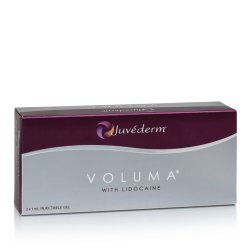Injectable Hyaluronic Acid

Skin fillers such as Restylane, Radiesse and Sculptra can be used temporarily to ensure facial fullness and improve facial contour. Although the results require temporary and maintenance treatment, the procedure is minimally invasive and requires a shorter healing period than alternative methods.
About the procedure
Face-up can give fuller facial features if your face looks tired. Various skin fillers can be used during treatment, such as a fast-acting hyaluronic acid-based injection that naturally dissolves in the body, or a collagen stimulator that stimulates the body to produce more collagen, which improves fullness over time. The skin filler is a good alternative for those who do not want to undergo more invasive treatment, such as with an implant or fat transfer.
Before starting the injection procedure, a local anesthetic cream should be applied to the area. Occasionally, lidocaine can be injected as a local anesthetic or combined with the filler itself for added convenience. The location of the injections depends on the individual needs and anatomy of the patient. However, injections are usually given 1 centimeter below the eye, the needle starts towards the inner corner of the eye and then "walks" on the face towards the outer corner of the eye. Once the placement of the small amount of filler in the desired areas has been completed, one skilled in the art will then professionally shape the filler to smooth and distribute the injected material. The filler may only be carried out by a specialist. Follow the aftercare instructions and do not touch the treated area after treatment. Rubbing, touching or massaging the treated areas may cause unintentional movement of the filler, unintentional fullness, visible material or increased redness.
The purpose of the facial filler is to increase the volume of the face and contour the face for a younger, more youthful appearance.
Before treatment:
stop taking blood thinners for 2 weeks
do not drink alcohol for 24 hours before treatment
reschedule treatment if a rash, blemish, or cold develops in the area
antiviral medication can be prescribed
During treatment:
local anesthesia tailored to the patient
usually performed 1 centimeter below the eye
smoothing and distribution of the injected material by a person skilled in the art
Immediately after treatment:
minor swelling and redness
minimal bruising
do not touch, rub the injected areas
1-3 days after treatment and beyond:
Return to work after 1-2 days
avoid sunshine and heat for 72 hours
1 week after treatment and beyond
swelling, redness, and bruising resolve within 7-10 days
The result is noticeable immediately after the injection.
Maintenance treatments 6 months - 2 years depending on the filler used
Important information
After facial filling, it is not uncommon for patients to experience swelling or minimal bruising at the injection site. Use ice or a cold compress to relieve swelling. The period of swelling is highly dependent on the type of skin filler used, although most swelling, bruising, and redness should dissipate within a week to ten days.
Facial filling is not recommended for patients who are pregnant, breastfeeding, or have a sinus infection.
Side effects
Side effects can include bruising, redness, pain, infection, skin necrosis, infraorbital nerve damage that results in numbness, regardless of the type of filler used. Lumps, visible material and redness may also occur.


